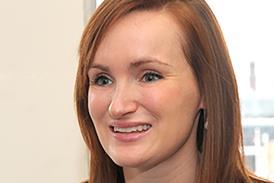Legal knowledge management is evolving rapidly but it’s still about platforms, processes and people.
For lawyers and law firms, knowledge is both a currency and a differentiator. The traditional knowledge management (KM) approach, aligning legal knowledge and knowhow with business strategy, remains valid. But its context has shifted dramatically as legal services face a changing business environment and the relentless flow of online information.
At the core of legal KM is hard business strategy: firms need to find the best ways to apply knowledge and knowhow to support and streamline services, and win and retain clients. Combining internal expertise and experience with market and peer intelligence underpins competitive advantage, which is about leveraging knowledge and knowhow better than competitors. Competitive advantage is the return on investment of KM.
Last month I attended two KM events which initially seemed very different. Global consultancy Janders Dean’s inaugural Knowledge and Innovation Forum (JDKIF) had international experts discuss the KM challenges in the legal sector and present innovative ways of addressing them. We heard from law firms, ABSs and in-house legal departments, with a focus on learning from other industries. On the academic side there was a fascinating presentation from Viktor Dörfler, professor of organisational learning at Strathclyde University.
Ark Group’s KM Legal event has been going strong for over a decade. This year was more interactive, with real-time audience surveys and workshops. Delegates were keen to debate the issues and well-known KM experts participated via Twitter.
Both events combined perennial themes with talk of new directions. But it seems that KM still revolves around platforms (technology), processes and people. Here are 10 highlights.
1. KM is about actionable knowledge. This means applying knowledge to processes. Andrew Baker’s keynote speech at JDKIF explained how his law firm Seyfarth Shaw has been championing ‘Lean Law’ for 10 years. This involves process mapping, then redesigning the processes to boost productivity, provide transparency and predictability around fees, and foster innovation. In a practical session at KM Legal, John Cussons and Tara Pichardo-Angadi demonstrated how KM at Norton Rose Fulbright was designed to reflect overall strategy and to include best practice in transaction workflows.
2. KM is about agility. Firms are being changed by client expectations and competition from tech-savvy ABSs and boutique firms. At KM Legal, Paul Lippe of Legal OnRamp focused on KM leading change management – championing and embedding new ways of working.
3. KM is about harnessing new platforms. Globalisation and online working have changed how we connect. At KM Legal, consultants Martin White and Paul Corney discussed managing virtual teams, while Steve Kuncewicz led a workshop on social media.
4. Firms need to look outside legal. As Nick Milton from consultants Knoco explained at KM Legal, the legal sector was an early adopter of KM but is lagging behind other industries. Sue Anderson, director of programs at the Australian Retail Association, showed JDKIF how retail technology is transforming the way clients interact with brands.
5. Legal KM needs to be client-centric too. Three out of Baker’s four keys to change related directly to client relationships:
1) prioritise client experience;
2) think and design outward-in, not inward-out;
3) get in front of the client… in person; and
4) different is good.
6. Artificial intelligence is not about robot lawyers (yet). It is about deciding what to automate. ‘Let computers do what computers are good at and people do what people are good at – interpreting data and delivering insights,’ Anderson said. At KM Legal, Pinsent Masons’ Orlando Conetta deconstructed IBM Watson to explain how big data predictive analytics apply to law.
7. KM is about managing the flow of legal, commercial and situational information and knowhow to make sure lawyers can identify and access what they need. Technology platforms and systems need to be flexible, scalable and most importantly accessible. User experience is a critical success factor. More firms are looking at current awareness products.
8. The legal sector can learn from academia. Professor Dörfler looked at the challenge of retaining critical tacit knowledge and knowhow. He championed 1:1 apprentice-style learning from knowledge ‘masters’, which seemed to contradict the general trend of moving things online. However, he then suggested automating basic tasks to give knowledge ‘masters’ more time to pass on their wisdom.
9. People are still the key to successful KM. Leadership roles and champions across the business are critical. Legal KM discussed whether KM should start with a strategy or a group of professional support lawyers. We heard about the effective ways of building engagement with KM resources and initiatives.
10. KM requires a knowledge-sharing culture. KM culture is about facilitating communication and collaboration between practice areas and departments, client collaboration and even collaboration between legal services providers. At JDKIF, workplace designer Matthew Kobylar explained why office design is an important factor in encouraging conversation and knowledge sharing. At KM Legal, a workshop facilitated by Linklaters’ Rachel Manser and Ian Rodwell produced multiple ways of encouraging interaction and engagement.
Ironically, in our connected yet disconnected world of remote and mobile working, organisational and workplace culture have become even more important. Legal KM functions are constantly seeking new ways to foster communication: we are connected, but we need to ensure that we are genuinely communicating.
Joanna Goodman is a freelance journalist





























No comments yet